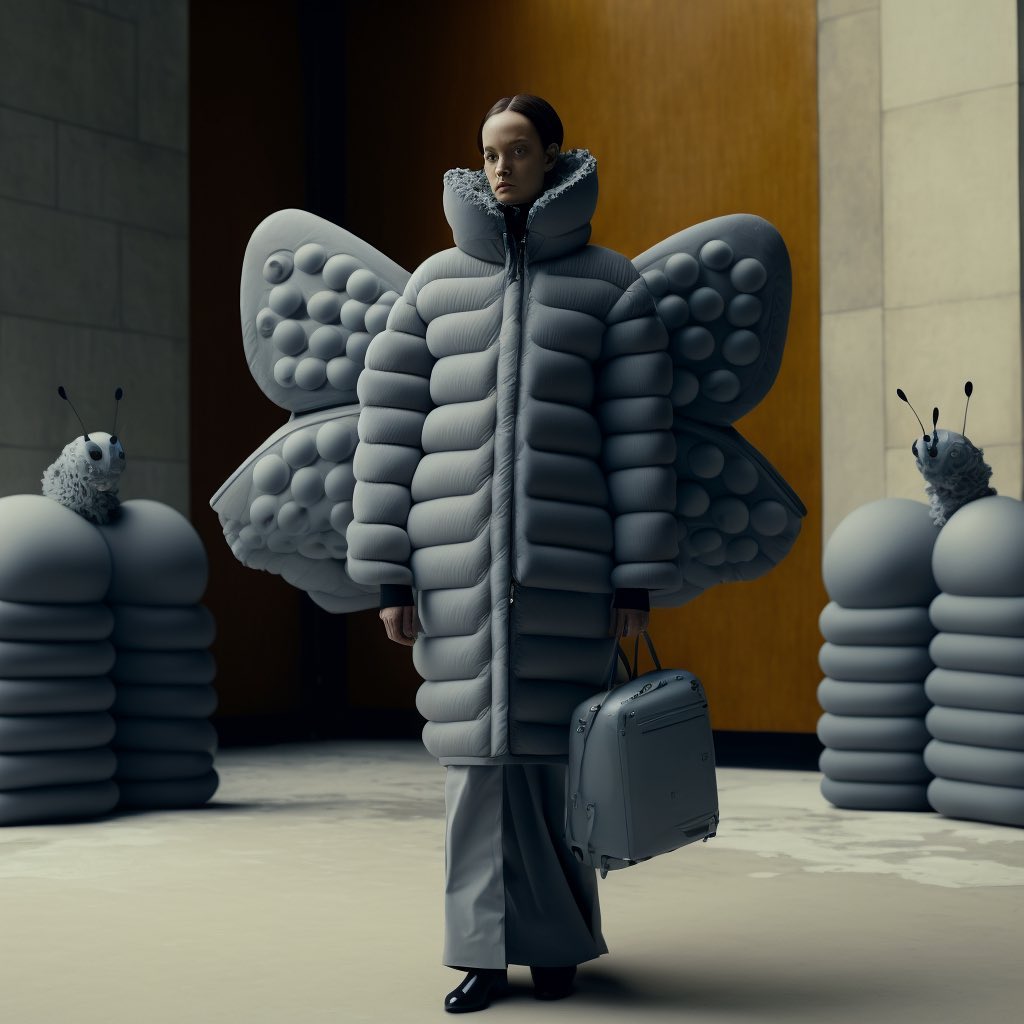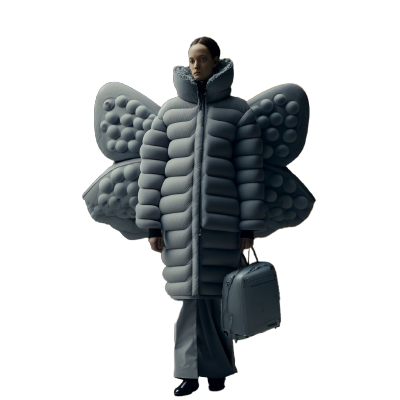

- Date
- 13 DECEMBER 2022
- Author
- DAVIDE ANDREATTA
- Image by
- @AIDESIGN.PNG
- Categories
- Aesthetics
Gorpcore, animals and AI: the future of clothing design. A conversation with Elmo Mistiaen
With his AI creations, Elmo Mistiaen (@aidesign.png) is at the forefront of a new wave of designers that, with or without formal education in that specific field, are exploring the new creative possibilities offered by the digital sphere.
With a sharp and refined aesthetic, his designs are a mix of the ongoing gorpcore trend and animal features that can take us directly into the future.

Good morning Elmo, I’m very curious to know more about your formal education: are you a trained designer or did you approach fashion design only after the diffusion of AI models?
Good morning! My background is actually far from design and fashion: I am a master student in Business Engineering at a university in Brussels. I will graduate this year and I am still trying to figure out what direction I want to go in after graduating. I am not sure if I want to go into the consultancy industry where 80% of my student colleagues go after graduating… So, I really only approached fashion design a few months ago with the introduction of AI’s diffusion models in the public sphere. I have always been into backpacks and bikepacking bags, especially these hiking gear with their technical engineering fabrics. I am currently really enjoying the ‘gorpcore’ or outdoor fashion trend, which I love to use in my AI generations.
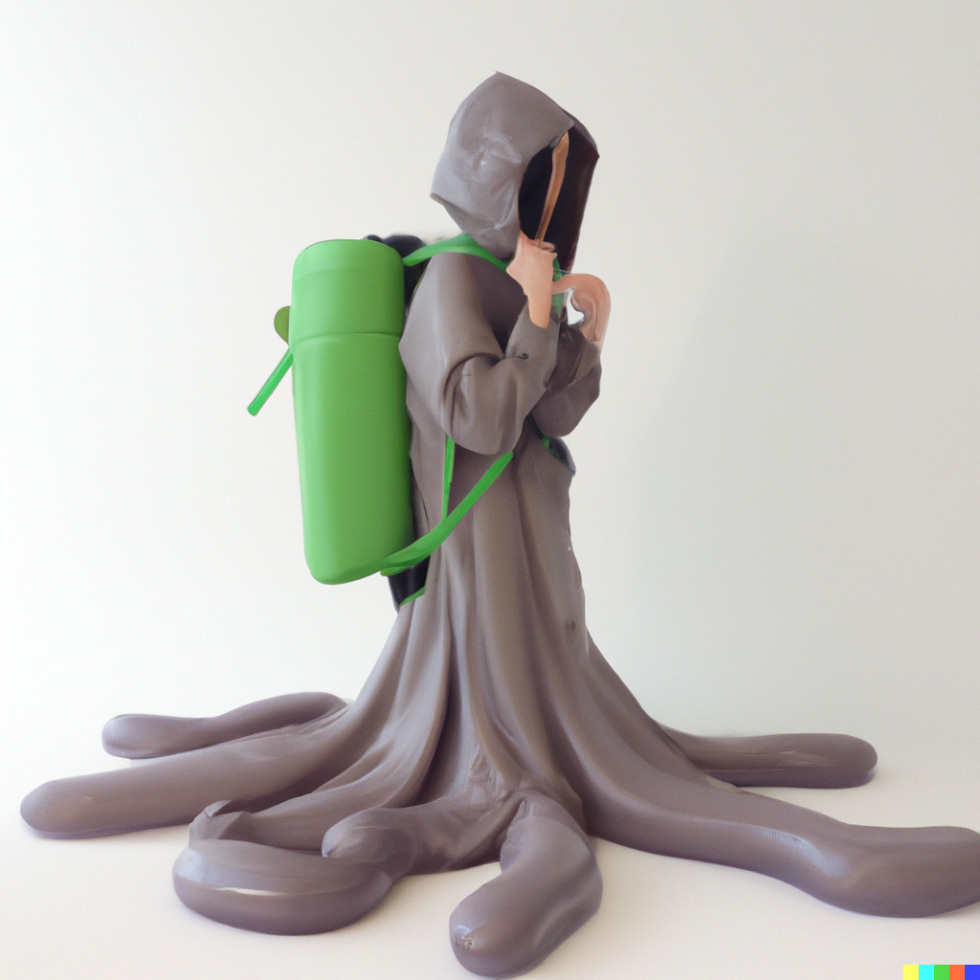
Usually a designer creates with a specific somatotype in mind, while I don’t think that the same can be told of Dall•E. Of course AI has its biases, but maybe this is a way of approaching design with a more inclusive eye (a machinic one you could say).
There are actually a lot of dataset biases I found out (which are a direct consequence of real world biases). I mainly begin my prompts by describing a person, often utilizing an additional gender specification. And even if the whole prompt stays the same, by adding the gender of the portrayed person I get vastly different images. Maybe there is a room for a project showcasing side by side what happens when I change the ‘gender’ of my prompts while everything else remains the same!
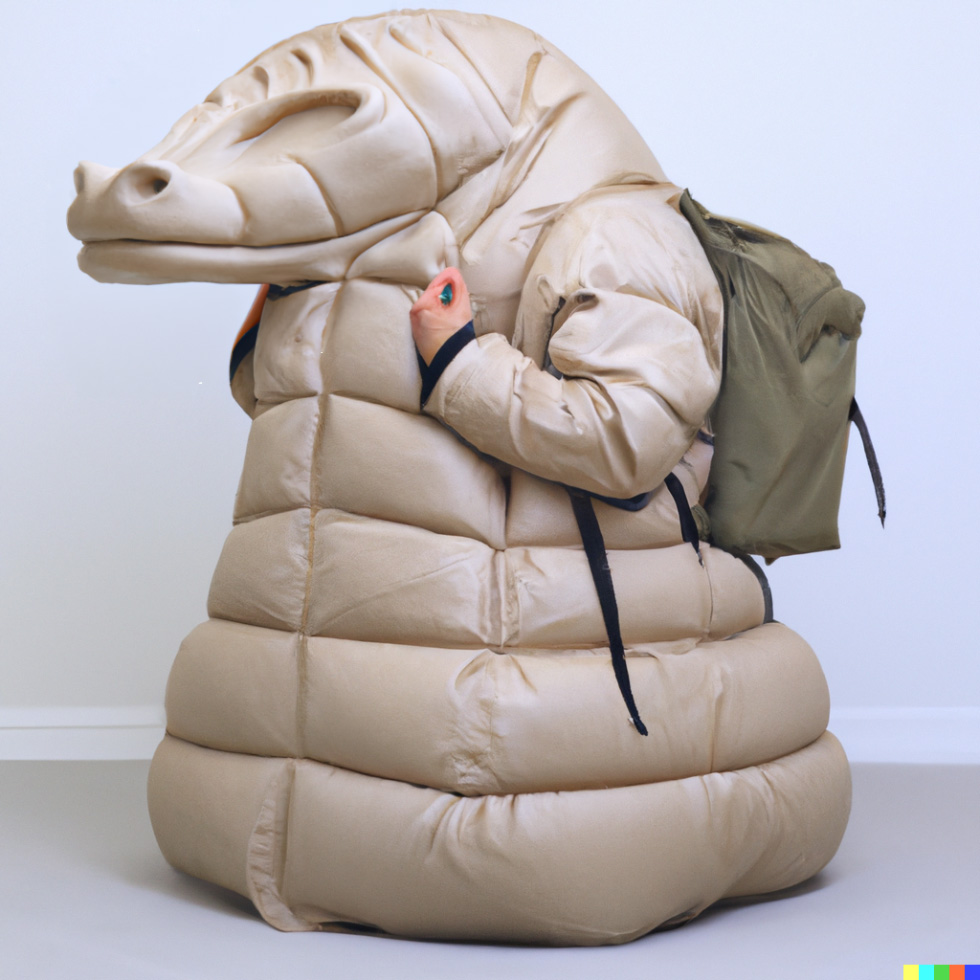
How specific are you with your prompts? When you type your words do you always have a specific aesthetic in mind or do you let AI decide for itself? There are some features that all your designs share and I was wondering if this is an intended effect or if Dall•E has a tendency to betray your input, if it has its own obsessions.
I am very specific with my prompts when it comes to the textiles and fabrics I want to be portrayed. Also you can play a lot with the lighting or the context of a picture and this allows you to get a wide range of results, including the more photorealistic ones. What is interesting to me is the possibility of using textiles that we easily recognize from their use in the real world and combining them with surrealistic atmospheres or scenarios that cannot exist in real life. I keep track of those descriptions of some fabrics that work best and reuse them in other scenes: this is why most of my designs share a certain aesthetic.
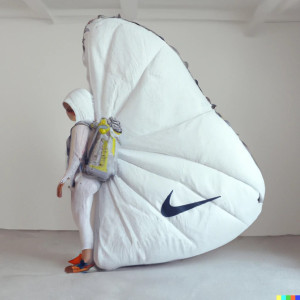
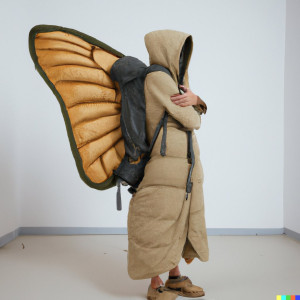
It is also helpful to keep in mind which descriptions you use and the database where these keywords come from. For example, if you use the word “Antarctica” chances are high you will get pictures of people with good clear lighting, because of the image database AI is extracting from. Another thing that I read somewhere and find really cool is that if you’re writing prompts about historical artifacts or paintings/murals and the results look too dirty or not clear enough, you can easily clean up your images by adding combination of words such as “well-preserved”, “outstanding example of”, “in perfect condition”, “careful restoration” so that the AI model will immediately provide you clear and crisp visual outputs.
As of now, I haven’t identified a distinct style that can be said to be shared among all Dall·E’s generations, which is something Midjourney ‘suffers’ from in my opinion. I can often see when an image is created using Midjourney, because of certain colors and volumetric lighting that most of Midjourney’s generated images share.
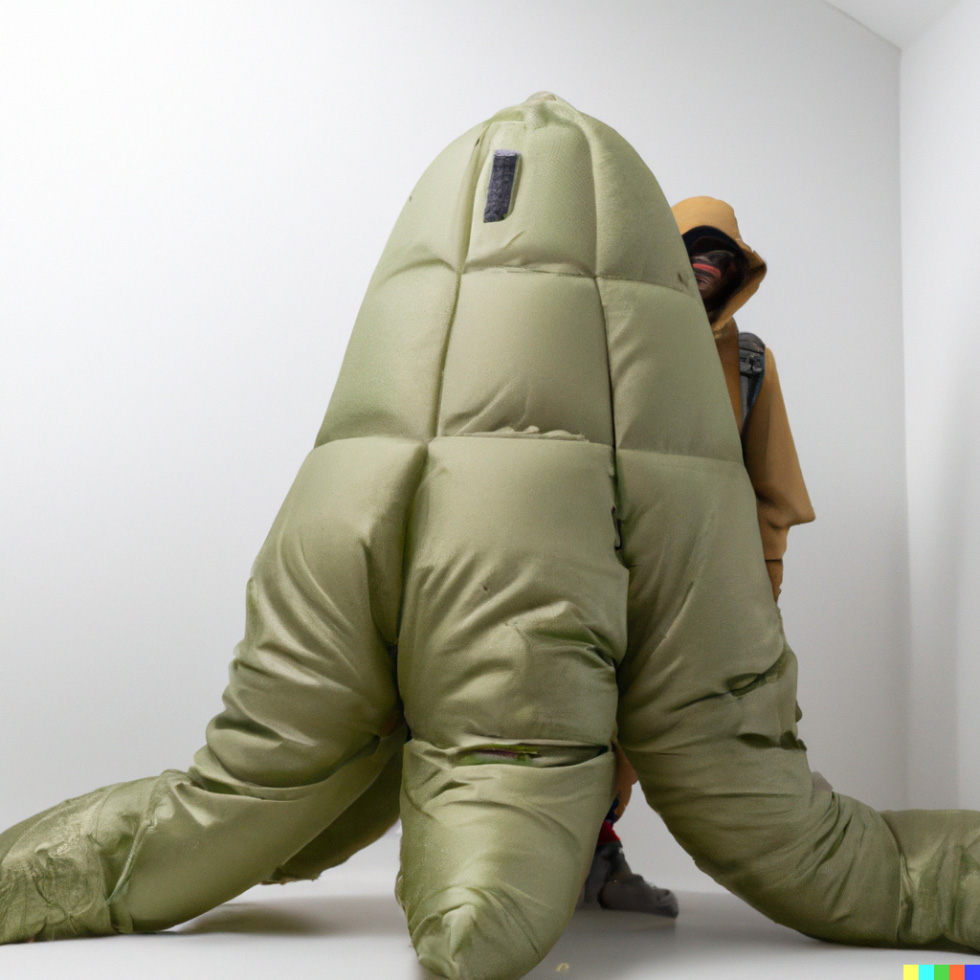
What do you expect of fashion in general? And how your AI experiments influence your expectations?
I don’t think AI will influence the mainstream fashion trends, but I am sure it will have some effect on the high fashion industry, with designers using AI tools to inspire and prototype certain designs.
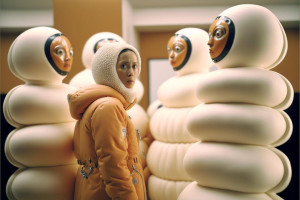
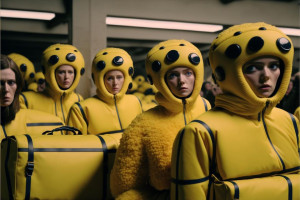
Curiously enough, many of your designs present some characteristics coming from the animal world: wings, worm-like shapes, shells... Can you expand on this? Can animals be fashion designers with a little help from AI models?
I am really into animals and biological processes. I love to take certain features that animals display and place them out of context by combining those same features with humans and objects. I also really love the organic forms used in furniture or architecture: utilizing an AI model is the perfect way to recreate and combine design with these biological morphologies.
I think of cool biological features that some animals possess that would look really unique if transferred to humans. An example might be this image I have been working on this week which is the image of a person with a gorpcore outfit and with an anglerfish lamp growing out of his head or backpack, thus lighting up a whole dark cave or forest. Or a group of gorpcore-obsessed humans with grasshopper spikey legs hopping around in a barren field.

In many of your images there is a sort of art performance atmosphere both in the composition and in the imaginary displayed: is this a casual element popping out from time to time or something you’re consciously exploring?
We can safely say that fashion possesses some evident ritualistic features (now more than ever with the surge of online communities): there is a level of shared knowledge necessary to get involved in its ceremonies, there is always a certain liturgy in the way fashion is enjoyed and products purchased, clothes are supposed to have a transformative power, a sort of rite of passage – as soon as you buy a luxury garment your identity is reshaped, at least when it comes to social perception – and so on…
I think the most eye-catching and captivating images are the ones where a person (or weird biomimicry mutant) is occupying the center with an almost theatrical pose. The poses are dictated by biases in the software: If I use certain fashion keywords in the prompt, the AI remembers parts of databases which contain photoshoots with models or magazine covers where people are more likely to strike a certain pose. I am currently exploring the puffy clothes trend and realistic lighting that highlights the creases and folds of these fabrics. The puffer jackets and outdoor clothes in a non-outdoor environment combined with certain animalistic features gives it an interesting juxtaposition.

Any new project you’re currently working on? Can you give us an anticipation of it?
I have a lot of collaborations in the pipeline and some of them are commercial. For these I use my AI editing skills to create unique marketable images (trying to find a way to sustain my expensive Dall·E addiction). But far more exciting are some upcoming collaborations with fashion designers who have the expertise to actually turn my visual works into real artefacts and we will generate new ideas and objects through the use of AI.

